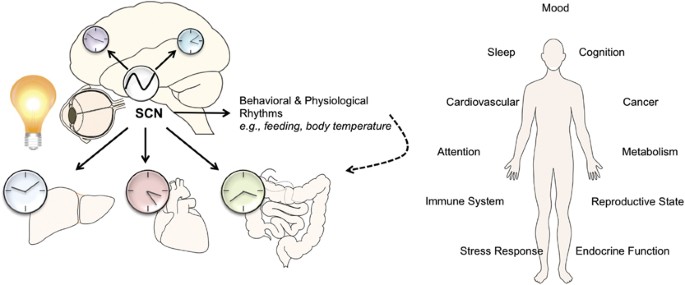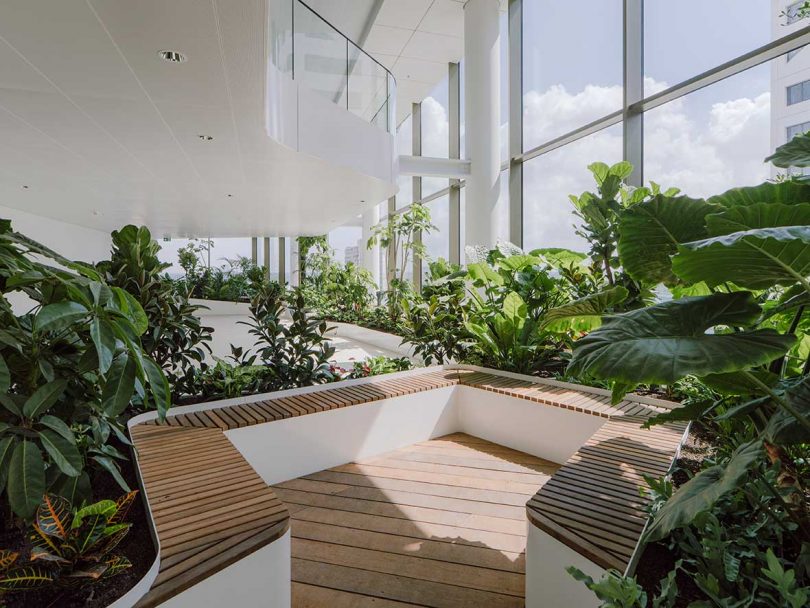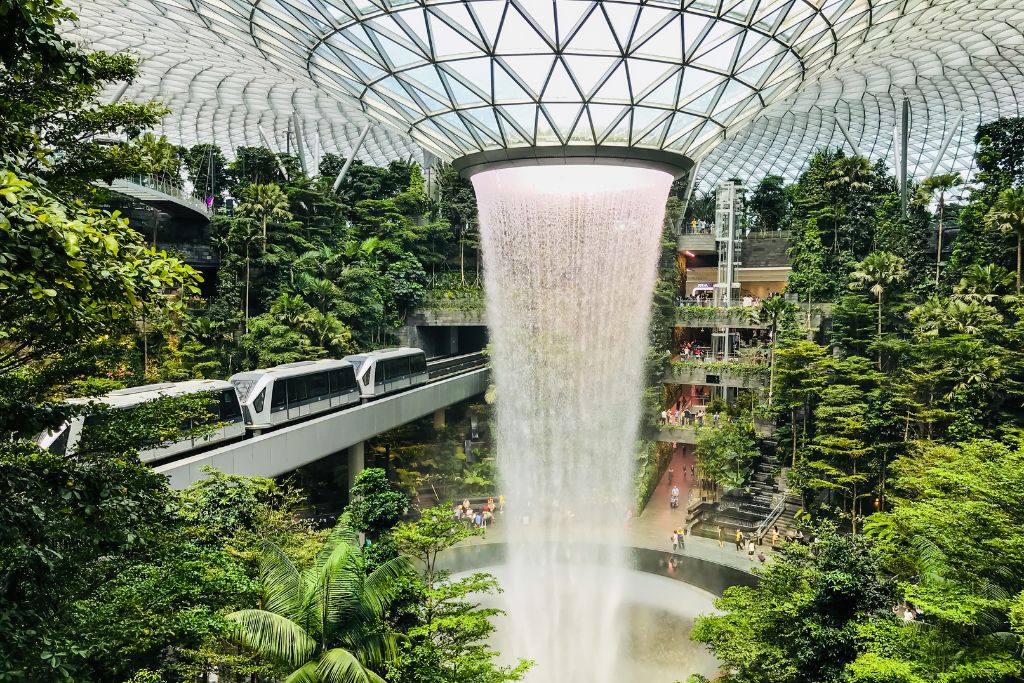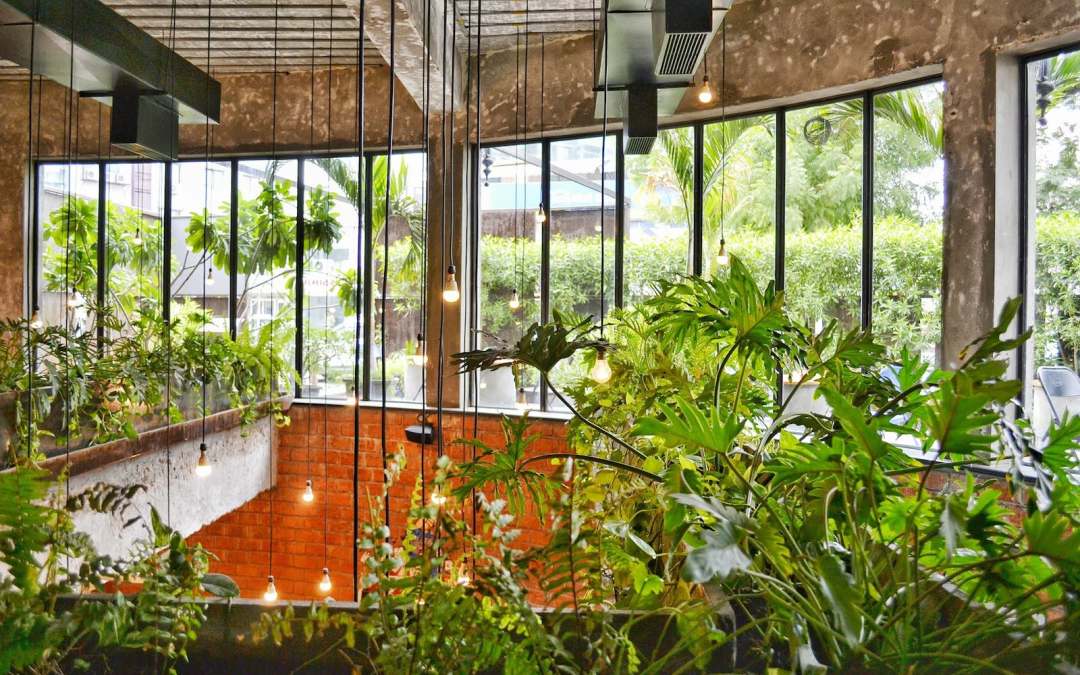Light and Its Effects on Circadian Rhythms in Urban Settings.
Light acts as a critical component in regulating our daily rhythms, influencing various aspects of human life, including sleep patterns, mood regulation, and time perception.
As urban environments become increasingly illuminated by artificial sources, it is essential to understand the relationship between light, circadian rhythms, and the broader implications for urban living and public health.
This article examines the fundamentals of light, its impact on biological clocks, and the implications of urban lighting on health, including light pollution and its effects on physiological responses and psychological well-being.
Readers are invited to explore how to navigate and mitigate the effects of light in our dynamic cities, taking into account urban planning strategies and smart lighting solutions.
What is Light?
.jpg_00.jpeg)
Light is a form of electromagnetic radiation that is visible to the human eye and is essential for regulating numerous biological and physiological processes. This is particularly significant in urban environments, where both natural and artificial light sources influence human behavior, health, and overall well-being.
The spectrum of light encompasses various wavelengths, with color temperature playing a pivotal role in determining the perceived visual warmth or coolness. This perception, in turn, can significantly impact mood regulation and sleep patterns.
What are Circadian Rhythms?
Circadian rhythms are intrinsic biological processes that operate on an approximately 24-hour cycle, regulating numerous physiological functions, including sleep-wake patterns, hormonal balance, and metabolic activities, in alignment with solar cycles and diurnal cycles.
This biological clock is essential for optimizing overall health, as it significantly influences behavior, performance, and well-being, particularly in urban environments where artificial light exposure, urbanization, and commuting patterns can disrupt these natural rhythms.
How Does Light Affect Circadian Rhythms?
Light exposure significantly affects circadian rhythms by influencing the production of melatonin, the hormone that regulates sleep cycles and sleep architecture. This relationship subsequently impacts sleep quality, energy levels, and overall health.
Insufficient exposure to natural light during the day, coupled with excessive artificial light at night, can disrupt circadian rhythms, leading to a range of physiological responses, including sleep deprivation, mood disorders, and heightened anxiety. These disruptions can also affect cognitive function and adaptive responses.
What are the Different Types of Light?
There are two primary categories of light: natural light, which emanates from the sun, and artificial light, produced by human-made sources such as bulbs and LEDs. Each type possesses distinct characteristics, including color temperature and intensity, which significantly influence visual comfort, retinal sensitivity, and health. Understanding the differences between these types of light is crucial in the context of lighting design, particularly in urban environments where light pollution can have detrimental effects on well-being and nocturnal behavior.
Natural light varies throughout the day and provides essential wavelengths that support circadian rhythms, regulating sleep patterns, hormonal balance, and life quality, all of which are vital for mental and physical health. In contrast, artificial light often presents as harsh and unflattering, lacking the dynamic qualities of sunlight and potentially contributing to issues such as eye strain, mood fluctuations, and circadian disruption.
For urban planners, the strategic implementation of appropriate lighting is essential; it can enhance safety, foster social interaction, and mitigate adverse health effects. Incorporating biophilia and smart lighting, planners can create restorative environments. As communities work towards well-lit spaces that promote productivity and relaxation, careful consideration of lighting sources becomes imperative in revitalizing and enriching our environments.
How Does Natural Light Affect Circadian Rhythms?
Natural light is essential for maintaining circadian rhythms by providing critical photoperiod cues that signal the brain to release or suppress hormones such as melatonin, thereby influencing sleep patterns and overall health. Sufficient exposure to natural light can alleviate conditions such as seasonal affective disorder and improve mood regulation and cognitive function.
In urban environments, where artificial lighting predominates, understanding the timing of light exposure becomes increasingly vital. The consistent interaction between natural light and our internal biological clock not only affects hormonal balance but also significantly impacts emotional well-being and environmental impact. Inadequate light exposure during daylight hours can disrupt these rhythms, potentially resulting in increased stress levels, anxiety, and even depression.
By prioritizing access to natural light, individuals can enhance their alignment with natural cycles and circadian clocks, ultimately promoting better mental health, wellness, and resilience against various psychological challenges.
How Does Artificial Light Affect Circadian Rhythms?
.jpg_01.jpeg)
Artificial light, particularly from digital screens, street lighting, and urban lightscape, can significantly disrupt circadian rhythms by altering melatonin production and affecting sleep hygiene. This disruption can lead to adverse health outcomes, including insomnia, anxiety, and impaired cognitive function.
It is essential to understand the implications of light pollution and the timing of light exposure to maintain a healthy sleep architecture.
The widespread use of electronic devices, especially in the evening, exposes individuals to elevated levels of blue light, which can interfere with the body’s internal clock and hinder the ability to fall asleep or maintain sleep architecture. Consequently, individuals may experience circadian disruption, resulting in chronic sleep deficits that negatively impact their overall well-being and productivity.
To mitigate these adverse effects, potential interventions such as the use of blue light filters, dimming devices, or reducing screen time in the evening may prove beneficial. Additionally, creating a nighttime environment with softer, warmer tones can enhance sleep hygiene, facilitate a more natural transition into restful slumber, and support adaptive responses.
What are the Effects of Light on Sleep?
The impact of light on sleep is significant, as exposure to light during inappropriate times can substantially disrupt sleep patterns, affect melatonin production, and ultimately diminish sleep quality.
Factors such as the type of light, timing of exposure, and duration are critical in influencing circadian rhythms, sleep disorders, and the overall architecture of sleep.
How Does Light Exposure Affect Melatonin Production?
Light exposure has a direct impact on melatonin production, with natural light stimulating its synthesis during the day and darkness facilitating its release at night. This phenomenon underscores the critical role of melatonin in regulating circadian rhythms, hormonal balance, and biological clock.
Disruption of this cycle, particularly due to excessive exposure to artificial light during nighttime, can result in negative health consequences, including insomnia and mood disorders.
As individuals increasingly encounter artificial lighting in their homes and workplaces, they may inadvertently impair their body’s natural capacity to regulate sleep patterns and circadian alignment. During the day, bright natural light enhances alertness, vitality, and energy levels, while the absence of light in the evening signals the body to prepare for rest.
This intricate interplay of light and darkness highlights the importance of light management in optimizing not only sleep quality but also overall well-being.
By adopting mindful practices regarding light exposure, such as dimming screens and using soft lighting in the evening, individuals can effectively promote healthier melatonin levels, improve sleep cycle, and support a more balanced hormonal environment.
What are the Consequences of Disrupted Circadian Rhythms?
Disrupted circadian rhythms can result in a variety of health effects, including sleep deprivation, heightened anxiety, mood disorders, and impairments in cognitive function and productivity. The misalignment between natural day-night cycles, lifestyle, and the common lifestyle changes experienced in urban environments exacerbates these consequences, highlighting the critical importance of circadian alignment for overall well-being.
In densely populated cities, constant exposure to artificial lighting, combined with demanding work schedules, location-based effects, and limited access to natural environments, further intensifies these disruptions. This chronic imbalance can impede the body’s capacity to regulate essential functions, potentially leading to long-term health issues such as metabolic disorders, cardiovascular problems, and weakened immune system responses.
Individuals residing in urban settings may encounter increasing difficulties in establishing healthy routines that align with their internal clocks and daily rhythms. Acknowledging the significant impact of maintaining circadian rhythms is vital, as fostering this balance can greatly enhance one’s quality of life, facilitating not only physical health but also emotional stability and mental resilience.
How Does Light Exposure in Urban Settings Affect Circadian Rhythms?
In urban environments, light exposure is typically defined by a combination of natural and artificial light, impacting temporal organization. This mixture can considerably disrupt circadian rhythms, primarily due to the prevalence of light pollution and inconsistent access to natural light.
Such disruption can interfere with the biological clock, resulting in health disparities and difficulties in maintaining proper sleep hygiene. Ultimately, this can have a significant impact on productivity, community dynamics, and overall well-being in urban living contexts.
What are the Sources of Artificial Light in Urban Settings?
.jpg_10.jpeg)
The sources of artificial light in urban environments consist of street lighting, digital screens, and various indoor lighting systems, which collectively contribute significantly to light exposure, particularly during nighttime. The design and intensity of these light sources are critical factors influencing their effects on health, circadian rhythms, sleep patterns, and overall urban resilience. This can also affect physiological responses and biological clocks, leading to various sleep disorders.
In such dynamic settings, the brightness and color temperature of artificial lighting can vary considerably, affecting not only visibility but also mood, productivity, and overall well-being. Excessive exposure to blue light emitted from digital screens and LED street lamps can disrupt natural sleep patterns, potentially resulting in a range of health issues, including insomnia, anxiety, and circadian disruption.
To address these challenges, effective lighting design is imperative. Incorporating softer, warmer light options during late hours may alleviate negative impacts on circadian rhythms and improve sleep quality. By prioritizing strategic illumination approaches, urban areas can enhance their vibrancy while promoting healthier living conditions for their residents. Additionally, adaptive responses to lighting designs can promote psychological well-being.
How Do Urban Environments Affect Natural Light Exposure?
Urban environments frequently restrict access to natural light due to the presence of tall buildings, light pollution, and insufficient community spaces, which can have detrimental effects on overall health, circadian rhythms, and visual comfort. The implementation of biophilic design principles can significantly enhance natural light exposure in urban settings, thereby promoting well-being and improving the quality of life. These principles also contribute to better architectural design and urban planning.
Such strategies are crucial for the development of vibrant community spaces that function as gathering points, encouraging social interaction while allowing ample sunlight to permeate these areas. In turn, this supports diurnal cycles and improves energy levels among residents, creating restorative environments.
When urban planners prioritize design elements such as green roofs, open courtyards, and strategically positioned windows, they not only increase the availability of natural light but also foster a deeper connection between individuals and nature. This connection can significantly enhance visual perception and aid in the regulation of hormonal responses associated with circadian rhythms.
This connection is essential, as research has demonstrated that daylight exposure is associated with improved mood, productivity, and cognitive function. Therefore, it is imperative for cities to adopt designs that are both functional and aesthetically pleasing in order to enhance public health and overall well-being.
What Can be Done to Mitigate the Effects of Light on Circadian Rhythms in Urban Settings?
To mitigate the effects of light on circadian rhythms in urban environments, a comprehensive approach is essential, integrating urban planning strategies with individual lifestyle modifications that facilitate circadian alignment. This includes considering the environmental impact of artificial light in city life and promoting smart lighting designs.
This approach should include interventions aimed at managing artificial light exposure, improving access to natural light, and increasing public awareness regarding sleep hygiene and overall health. Strategies could also involve leveraging light therapy to improve sleep architecture and mitigate seasonal affective disorder.
How Can Urban Planning Address Light Pollution?
Urban planning plays a critical role in addressing light pollution through the implementation of energy-efficient lighting designs, adaptive lighting solutions, and the creation of community spaces that enhance access to natural light. This proactive approach is essential for mitigating the adverse effects of artificial light on circadian rhythms, visual comfort, and public health.
By prioritizing the use of smart technology and sustainable materials, urban planners can develop environments that conserve energy while simultaneously promoting the well-being of residents. The incorporation of green spaces, such as parks and gardens, offers residents opportunities to enjoy natural light during the day, reducing the dependency on artificial illumination at night and supporting outdoor lifestyle activities.
Furthermore, designing pedestrian-friendly layouts encourages outdoor activities, fostering a sense of community and a connection to nature. As cities increasingly acknowledge the importance of achieving a balance between illumination and darkness, effective urban strategies will be vital in enhancing the quality of life, safeguarding the ecological integrity of urban environments, and promoting wellness.
What Steps Can Individuals Take to Protect Their Circadian Rhythms in Urban Environments?
Individuals can implement several strategies to protect their circadian rhythms in urban environments. These strategies include practicing good sleep hygiene, managing the timing of exposure to artificial light, and making lifestyle adjustments that prioritize natural light during the day. By being attentive to their light exposure, individuals can enhance sleep quality, mood regulation, and overall health. The use of light as medicine can also be considered to counteract the negative effects of urban living.
One effective approach is to establish a consistent sleep schedule that aligns with the natural light-dark cycle, which aids the body in recognizing when it is time to prepare for rest, thereby supporting the biological clock and increasing overall wellness.
Incorporating activities such as morning walks or exercising outdoors can significantly increase exposure to sunlight, promoting alertness and enhancing diurnal cycles throughout the day. This exposure can aid in the regulation of circadian clocks and improve time perception.
Additionally, reducing screen time in the evening and employing blue light filters can mitigate the disruptive effects of artificial lighting on melatonin production and sleep quality, supporting better sleep architecture.
Mindful eating practices, such as avoiding heavy meals close to bedtime, further contribute to improved sleep hygiene and support healthier circadian rhythms. This also promotes better metabolic health and reduces the risk of sleep disorders. It is essential for urban dwellers to adopt these strategies to achieve optimal well-being.
Frequently Asked Questions
.jpg_11.jpeg)
What are circadian rhythms and how are they affected by light in urban settings?
Circadian rhythms are biological processes that follow a 24-hour cycle, regulating our sleep-wake patterns, metabolism, and other bodily functions. Light is the primary external cue that influences our circadian rhythms, and in urban settings, artificial light can disrupt these rhythms and cause health issues. The interaction between circadian rhythms and light exposure timing is crucial for maintaining healthy lifestyles.
How does artificial light in urban settings affect our sleep-wake cycle?
Artificial light, particularly blue light emitted from electronic devices and streetlights, can suppress the production of melatonin, a hormone that helps us sleep. This can lead to difficulty falling asleep, shorter sleep duration, and poor quality sleep, ultimately disrupting our natural sleep-wake cycle. This has significant implications for human behavior and time perception in urban environments.
Are there any other negative effects of artificial light on our circadian rhythms in urban settings?
Yes, exposure to artificial light at night can also lead to a delay in our body’s natural release of melatonin, causing us to stay awake longer and disrupting our natural sleep-wake cycle. This can also affect our mood, energy levels, productivity, and overall health. Such circadian disruption can have long-term health outcomes, including increased risk of sleep disorders.
How can we mitigate the negative effects of artificial light on our circadian rhythms in urban settings?
One way to mitigate these effects is by limiting our exposure to artificial light at night, particularly from electronic devices, or by using blue light filters. Additionally, choosing warmer, dimmer light sources in our homes and opting for low-intensity streetlights in urban areas can also help. Understanding the light spectrum and its role in influencing our circadian rhythms is essential for effective light management.
Can natural light in urban settings have positive effects on our circadian rhythms?
Yes, natural light, particularly natural light exposure in the morning, can help regulate our circadian rhythms and improve our sleep-wake cycle. Spending time outdoors during the day can also help regulate our body’s production of melatonin, enhance light adaptation, and promote better sleep at night. This is essential for maintaining psychological well-being and cognitive function.
Are there any other factors in urban settings that can affect our circadian rhythms?
Yes, noise and air pollution in urban areas can also disrupt our circadian rhythms and affect our sleep patterns. Additionally, lifestyle factors such as irregular work schedules, caffeine and alcohol consumption, and stress levels can also impact our circadian rhythms and sleep-wake cycle. Commuting patterns and social interactions in city life further exacerbate these disruptions, highlighting the need for adaptive responses to urban living.

I’m Bruno, an architect with a deep passion for Biophilic Design in Urban Architecture. Throughout my career, I’ve focused on integrating natural elements into urban planning, and I created this site to share my insights and foster a deeper understanding of how biophilic principles can significantly enhance urban living. Dedicated to sustainable development, I continually explore innovative design solutions that promote both environmental and human well-being in city landscapes.














Publicar comentário